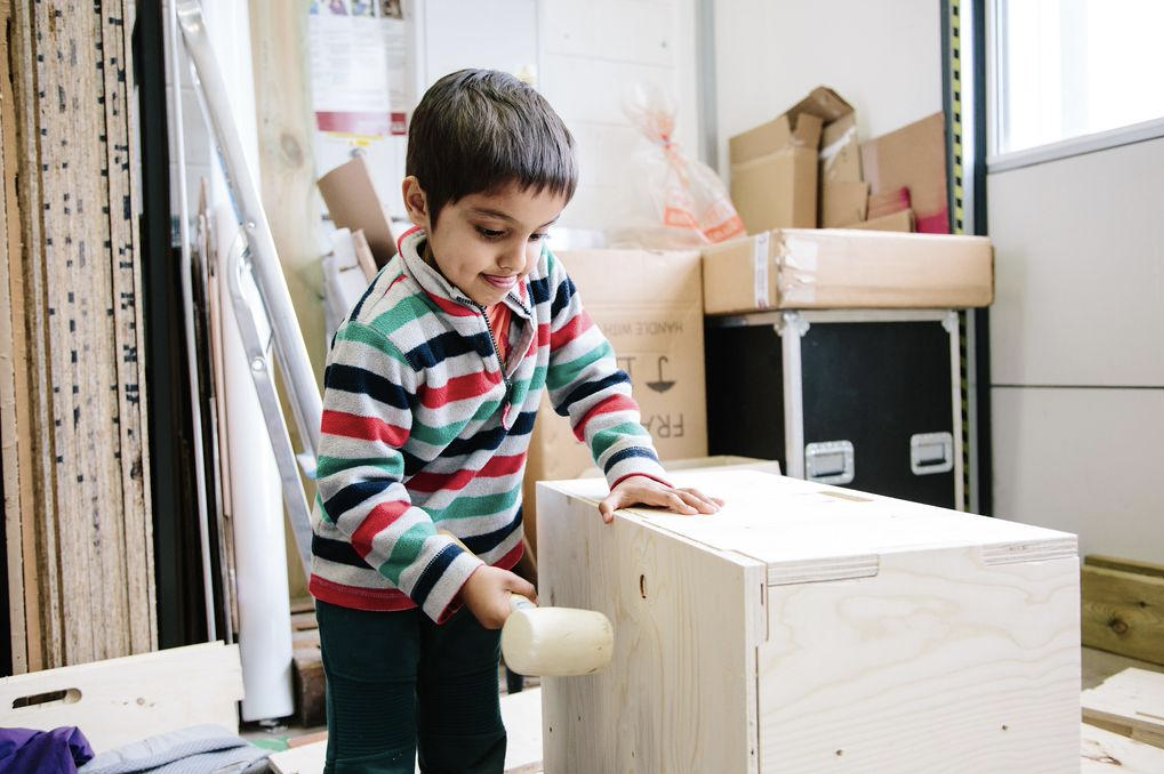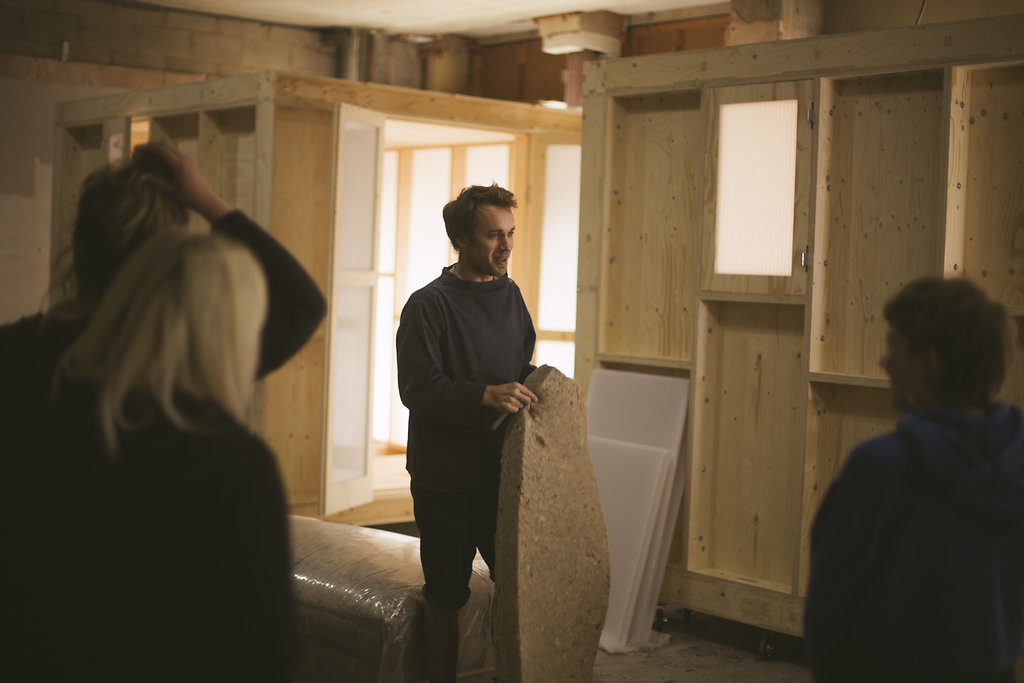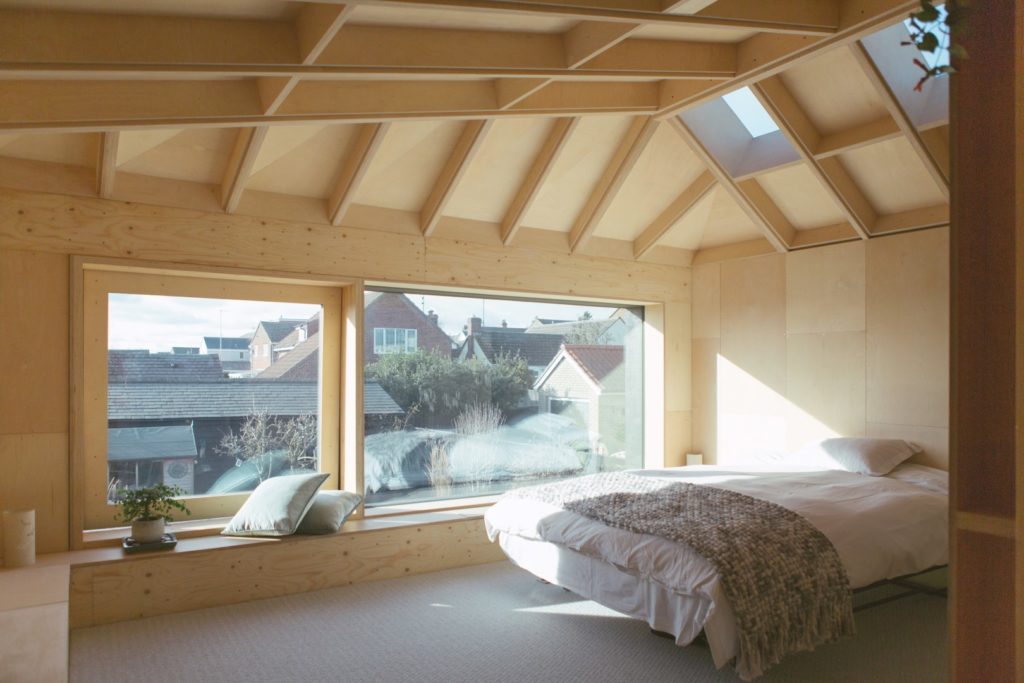
WeCanMake, Bristol
When did we forget how to build?
When I was a child, I would spend hours and hours after school and at the weekend playing with building blocks in my bedroom. I remember sitting right in the centre of the room, with the tiny colourful pieces spread out across the floor, in a sea that stretched further than my infant hands could touch. I would have endless fun staring into space and imagining all the amazing things I could create, before reaching for the nearest block and starting to assemble.
Building blocks are a wonderful way for children to unleash their imagination, creativity, and spatial awareness, and are something that so many of us have enjoyed whilst growing up. And yet as we grow, it seems that so many of us lose touch with what it means to build.
Reconnection with building is a microcosm of what is happening in communities all over the world. People are reevaluating, trying new skills, and forging new connections.
Buildings designed by adults often feel like a completely different offering from the buildings made by children. Gone are the colours, the bold shapes and the sense of freedom, and in
creeps the regulations, the planning restrictions, and the uniformity.
Whilst many of the buildings we see today are perfectly charming, the reality is that most of us live in a house that was not even designed for us, let alone by us. The typical house is built by someone else, for someone who they may never have met, and more than likely is someone who hasn’t even been alive for over a hundred years.
There’s nothing wrong with living in old buildings, in fact preserving and retrofitting them is key to a sustainable future, but if we have no part to play in the construction of our homes, then to what extent can we say that they are actually ours? It seems that most of us have lost the skills of our ancestors, the skills we need to adapt or even repair our homes, let alone build something new. When and how did we forget?
Part of the problem is that buildings are the backdrop. They stage the scenes of our lives: we may enjoy them, decorate them, or aspire to move to a new one, and yet it is very easy for buildings to be taken for granted. To slip away into our subconscious, only really reappearing with a jolt, when things fail – a broken pipe, roof tile, or window reminding us of our fragility, and dependence on their shelter.
Whatever the reason we lost our touch with building, be it through career specialisation, industrialisation, or speculation, the arrival of the pandemic in 2020 has brought us the biggest jolt of all. An abrupt pause in our lives, which has forced many of us to stop our daily pursuits, and at the same time to become confined in these very buildings that we have otherwise paid so little attention to.
In 2019, you’d be forgiven for thinking that our homes were of little importance to us, given how little time we spent in them. Offices, coffee shops, bars and restaurants, gyms, hotels and holidays we pay good money for and yet we would avoid spending quality time at home.
In 2020 as FT’s Edwin Heathcote wrote in his recent article ‘Have we lost touch with our buildings’, we have been positively repelled from interacting with these structures. We have lost touch with the only remaining thing keeping us in contact with our buildings – with the switches, door handles, and banisters, through fear of viral transmission.
And yet 2021 has brought an antidote. As vaccination has offered us a glimpse of coming back together, so too have individuals started reconnecting with their buildings. With time on their hands, spare savings, isolated at home, and with an urge to create something tangible, there has been a surge in interest in self-build projects, with big spikes in google search terms like ‘DIY’, ‘build’, ‘tiny house’ and ‘garden room’.
Where previously it might be a matter, of course, to bring in a builder to carry out work, since the pandemic, there has been a justifiable reluctance to do so. Could this have been the key driver in encouraging us to dust off the toolset once more… or could it be something greater?
In learning a craft, in working a material, in participation, we find not only a sense of reconnection but also a deeper understanding. When we have played a part in the making of something, however small, we have imbued that object with something of our own, at a time when tangible connections are so fleeting. Through this act we at once find a sense of purposeful meditative creation, and through creation we find agency, and through agency we foster a deeper sense of ownership.
If through engagement, we are to reconnect with the building process, then we, just like our ancestors, will come to understand our buildings. What they are made of, where the materials come from, how they have been sourced, how they are repaired, and how they can be made to endure. This knowledge will in turn change our choices and actions, and make us more responsible custodians.
Reconnection with building is a microcosm of what is happening in communities all over the world. People are reevaluating, trying new skills, and forging new connections. This renewal is the very theme of this spring festival.
It seems that we are on the verge of a global awakening, with a new understanding of what it means to exist on and as part of this planet. We are learning more about the interconnectedness of all things, and the impact that we can have on our surroundings. With other great societal challenges ahead of us we cannot simply return to the way things were and instead use our newfound global conscience to build back better, so first, we must re-learn how to build.
We love to build with and for communities, this is a great way to get everyone engaged and participating. You can find out more about our community scale projects.

